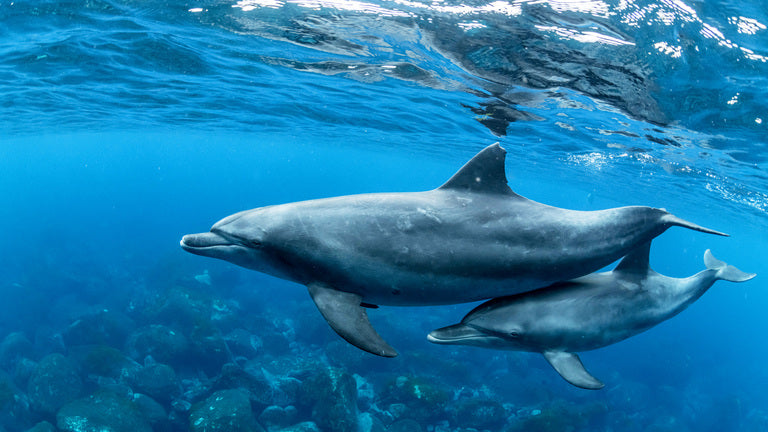
The Secret Lives of Dolphins: Nature’s Ocean Guardians
🌊 The Secret Lives of Dolphins: Nature’s Ocean Guardians
Dolphins aren’t just playful and intelligent—they play a vital role in maintaining the balance of ocean ecosystems. As apex predators, dolphins help regulate fish populations, ensuring no single species dominates and that marine food chains stay healthy. According to the National Oceanic and Atmospheric Administration (NOAA), “marine mammals like dolphins serve as indicators of ocean health. When dolphin populations are healthy, it’s often a sign that the ecosystem is functioning properly.”
🐬 Social Bonds and Pod Life
Dolphins are among the most social creatures in the animal kingdom. They live in groups called pods, which can range from just a few individuals to over a hundred, depending on the species and region. These pods aren’t just for companionship—they are essential for survival. In pods, dolphins:
- Cooperate to herd schools of fish into tight balls, making hunting more efficient.
- Protect the young, sick, or injured. Studies have observed dolphins helping struggling pod members stay afloat or defending them against sharks.
- Form alliances: Research on bottlenose dolphins (Tursiops truncatus) in Shark Bay, Australia, has shown males creating lifelong bonds to cooperate in finding mates (Connor et al., 2000).
Some dolphins even use tools. Bottlenose dolphins in parts of Australia, for example, have been observed covering their snouts with sponges to protect them from sharp objects while foraging along the seabed—an example of learned behavior passed between generations.
🐬 Communication: A Complex Language of the Sea
Dolphins are famous for their clicks, whistles, and body language—but what’s truly remarkable is how sophisticated this communication is. Each dolphin has a signature whistle, a unique sound that functions almost like a name. Dr. Stephanie King and her team (2013) found that dolphins respond when they hear their own signature whistle, even after years apart.
Scientists believe dolphins use their sounds to:
- Coordinate group hunts
- Identify individuals
- Signal distress or alert others of threats
- Strengthen social bonds through synchronized vocalizations
Despite decades of study, much of dolphin communication remains a mystery—part of what makes these animals so fascinating.
🌊 Threats to Dolphins and How We Can Help
Unfortunately, dolphins face serious challenges:
- Pollution: Plastic waste, chemicals, and heavy metals contaminate their habitats. Microplastics have even been found inside dolphin stomachs.
- Bycatch: Dolphins often get accidentally caught in fishing nets. According to the WWF, “bycatch is one of the greatest threats facing cetaceans today.”
- Habitat loss and noise pollution: Coastal development and loud ship traffic interfere with dolphins’ ability to communicate and navigate.
But there’s hope. By supporting sustainable fisheries, reducing plastic use, and choosing brands that fund conservation efforts, we can all contribute to healthier oceans. Every small step — from beach cleanups to eco-friendly shopping — helps protect dolphins and the vibrant ecosystems they help sustain.
Sources you can reference for more info:
- NOAA (oceans.noaa.gov)
- WWF (worldwildlife.org)
- King et al., 2013, Proceedings of the National Academy of Sciences
- Connor et al., 2000, Animal Behaviour